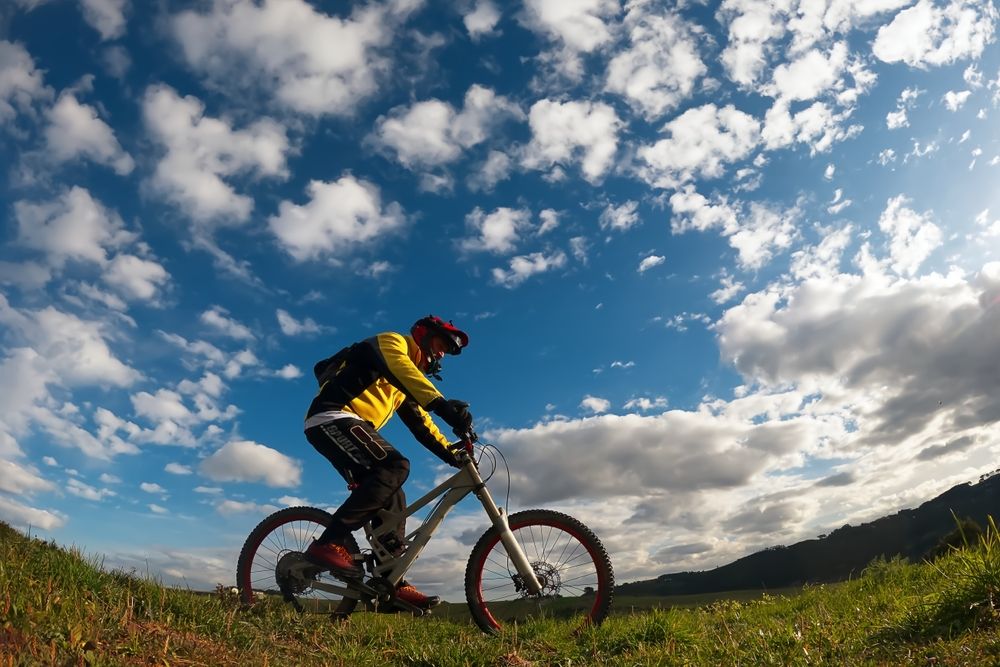Choosing a mountain bike isn’t just about picking the coolest frame or the flashiest color. It’s about finding the right fit for your riding style, terrain, comfort, and long-term performance. With so many models on the market, selecting the right mountain bike can feel overwhelming — especially for first-time buyers or casual riders.
Whether you’re hitting rugged trails, exploring fire roads, or just enjoying off-road weekend rides, here’s a comprehensive guide to help you choose the right mountain bike for your needs.
Understand the Different Types of Mountain Bikes
Mountain bikes are built for a variety of terrains and riding preferences. Before making a decision, it’s important to know the basic categories:
-
Cross-Country (XC): Lightweight and efficient, great for speed and climbing.
-
Trail: All-purpose bikes that handle descents and climbs well — ideal for most riders.
-
Enduro/All-Mountain: Built for aggressive descents and technical terrain, but still climb reasonably well.
-
Downhill: Made for steep, fast descents with heavy suspension; not good for uphill.
-
Fat Bikes: Feature wide tires for sand, snow, and other loose terrain.
-
Electric Mountain Bikes (E-MTBs): Offer pedal-assist for longer or more challenging rides.
Choose based on the terrain you expect to ride the most.
Decide Between Hardtail and Full-Suspension
Suspension type significantly impacts both price and performance.
-
Hardtail: Front suspension only. Lighter, less expensive, and ideal for smoother trails or beginners. Easier to maintain.
-
Full-Suspension: Front and rear suspension. Better comfort, control, and traction on rough terrain but costs more and adds weight.
If you’re riding technical trails, a full-suspension bike might be worth the investment. If you’re sticking to forest paths or gravel, a hardtail might be all you need.
Frame Material Matters
The material of your mountain bike frame will influence its weight, strength, and cost.
-
Aluminum: Most common and budget-friendly; offers good durability and weight balance.
-
Carbon Fiber: Lightweight and strong, but pricier. Absorbs trail vibrations well.
-
Steel: Strong and more forgiving but heavier; good for touring or custom builds.
-
Titanium: Lightweight and long-lasting but extremely expensive.
For most riders, aluminum offers the best value and durability. Carbon is a good upgrade if weight reduction is a top priority.
Get the Right Frame Size
A bike that doesn’t fit right will be uncomfortable and difficult to control. Frame sizing varies by brand, but generally follows Small (S), Medium (M), Large (L), etc.
Key measurements to check:
-
Standover Height: You should be able to straddle the bike with a few inches of clearance.
-
Reach and Stack: Defines how stretched or upright your riding position is.
-
Top Tube Length: Affects overall fit and comfort.
Visit a local bike shop for a proper fitting or use the manufacturer’s sizing chart based on your height and inseam.
Check the Wheel Size
Wheel size affects how your bike handles different terrain.
-
29-inch wheels: Great for rolling over obstacles and longer rides; smoother and more efficient.
-
27.5-inch wheels: Offer quicker acceleration and better maneuverability on tight trails.
-
26-inch wheels: Mostly phased out but still found on older or budget bikes.
-
Plus-size tires (wide tires): Provide extra traction and comfort, especially for beginners.
Your riding style and trail conditions will determine which size works best for you.
Consider the Gearing System
Gearing helps you conquer hills and accelerate on flat ground. Mountain bikes come in 1x, 2x, or even 3x setups:
-
1x (Single Chainring): Simpler, lighter, and easier to use — ideal for beginners.
-
2x or 3x: Offer more gears for varied terrain but can be more complex to shift.
If you’re riding steep climbs or long distances, more gears might help. For general trail riding, a 1x drivetrain is often enough and easier to maintain.
Evaluate the Brakes
Brakes are crucial for control and safety — especially on descents.
-
Hydraulic Disc Brakes: Offer strong stopping power and better modulation. More expensive but worth it.
-
Mechanical Disc Brakes: Cheaper but less powerful and require more maintenance.
-
Rim Brakes: Rare on modern mountain bikes due to poor performance in wet or muddy conditions.
For mountain biking, hydraulic disc brakes are highly recommended.
Pay Attention to Suspension Quality
If you’re investing in a full-suspension or hardtail bike, the fork or rear shock quality matters. Look for adjustability, responsiveness, and durability.
Reputable suspension brands include:
-
RockShox
-
Fox Racing Shox
-
Marzocchi
-
Suntour (entry-level)
Better suspension means better control, smoother rides, and less fatigue — especially on long or technical trails.
Check Component Quality
Mountain bikes include a variety of components that affect performance and reliability:
-
Drivetrain: Look for Shimano, SRAM, or similar brands.
-
Crankset and Cassette: Impacts gear range and climbing power.
-
Handlebars and Stem: Wider bars offer better control.
-
Seatpost: Consider a dropper post if you’re tackling technical descents.
Better components mean less maintenance and more consistent performance over time.
Don’t Forget Pedals and Accessories
Many mountain bikes are sold without pedals, allowing you to choose between:
-
Flat Pedals: Great for beginners or technical trails. Easy to bail out if needed.
-
Clipless Pedals: Lock your foot into place for more efficiency, but with a learning curve.
Also consider:
-
Helmet
-
Gloves
-
Padded shorts
-
Multi-tool and tire repair kit
-
Hydration pack or water bottle cage
Having the right gear will enhance your experience and keep you safe.
Set a Realistic Budget
Mountain bikes vary widely in price — from a few hundred dollars to several thousand. Set a budget and know what to expect at each level:
-
Under $800: Good entry-level hardtails for light trail use.
-
$1,000–$2,000: Mid-range bikes with better suspension and components.
-
$2,000–$4,000: High-quality trail or enduro bikes with advanced features.
-
$4,000 and up: Premium builds, often for competitive or specialized use.
Remember to factor in accessories and maintenance costs.
Test Ride Before You Buy
Whenever possible, test ride a few different bikes. A bike may look great on paper but feel wrong on the trail. Consider:
-
How does it handle corners and climbs?
-
Is it comfortable on long rides?
-
Does it feel stable or twitchy?
Trust how the bike feels, not just the specs.
Choosing the right mountain bike comes down to understanding how and where you ride, and what features matter most to you. Don’t get caught up in hype or marketing — focus on fit, function, and long-term value. Whether you’re just getting started or looking to upgrade, the perfect trail companion is out there waiting.





